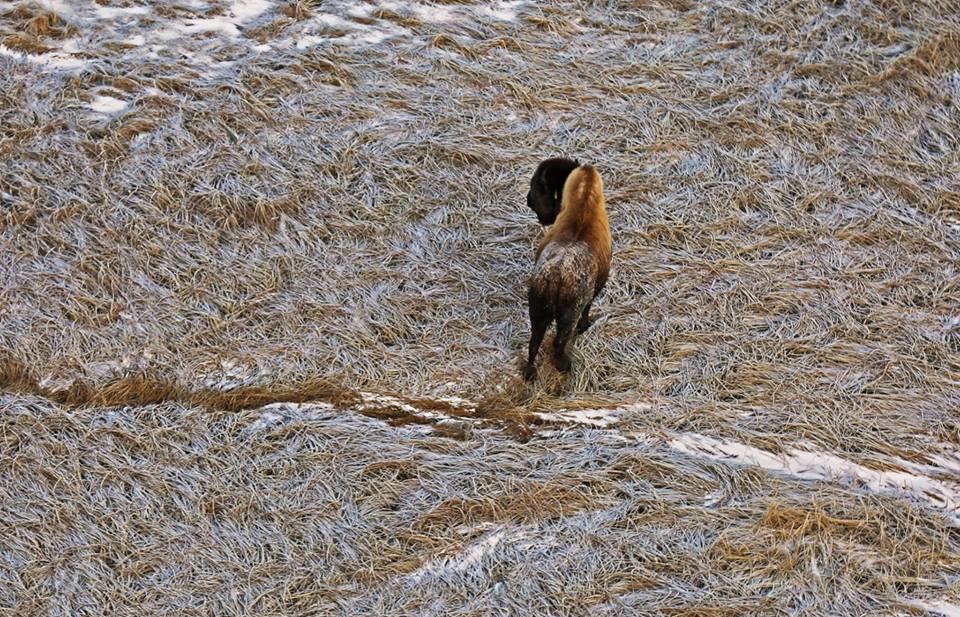
(Photo: Alaska Department of Fish and Game)
She was a wanderer. Instead of sticking with her herd, Wood Bison 124 headed out on her own, traveling hundreds of solitary miles from the Alaska Yukon, down the Kuskokwim, to the sea.
Friday (Jan. 27), near Quinhagak, a bullet ended her journey.
She was shot illegally.
A man from the village of Quinhagak has been charged for poaching. 25-year-old Benjamin W. Moore, has been charged with two misdemeanors for illegally taking and possessing game. The meat has been donated to the McCann Treatment Center in Bethel.
Wood Bison No. 124 was one of 130 wood bison released along the lower Innoko and Yukon rivers in 2015 between April and June. That release was the beginning of the Alaska Wood Bison Restoration Project, an effort to rebuild a population of wood bison here after they disappeared about 200 years ago.
The plan was to give the bison ten years to have babies, find their range, and become a bigger herd before hunters would get a chance to harvest them. During the few years she had, Wood Bison 124 became a bit of a celebrity.
Tom Seaton, the wildlife biologist who oversees the wood bison reintroduction project with the Alaska Department of Fish and Game, described her as a wanderer that “captured the hearts of rural communities across western Alaska.”
Seaton called the death, “a sad loss.”
According to the state, during her wanderings, 124 had a “knack” for finding good bison habitat. Now, she can no longer share this information with the rest of the herd, leaving what Seaton called, “a void that could slow [the] herd’s expansion.”
Anna Rose MacArthur is a reporter at KYUK in Bethel.




